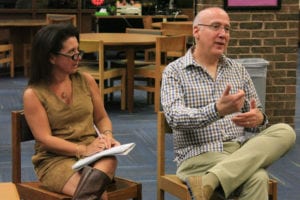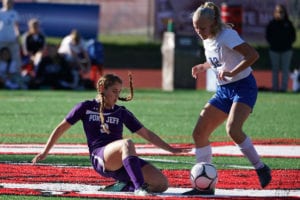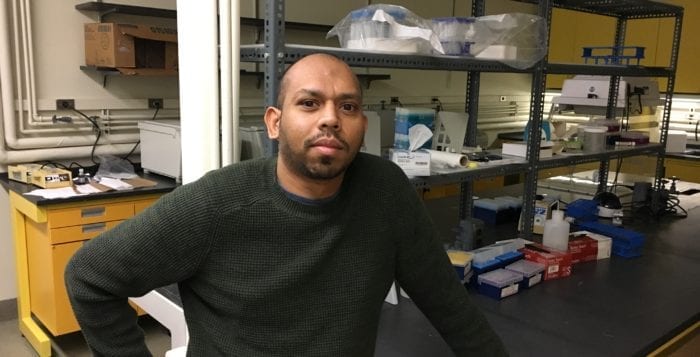
By Victoria Espinoza
Crime in Huntington Station is officially on the decline — and the Suffolk County Police Department has the numbers to prove it.
Law enforcement and town officials gathered at the 2nd Precinct Nov. 14 to update the community about decreasing crime in the area and efforts to help improve the quality of life for residents.
According to Sini, in the last 28-day period compared to the same 28-day period in 2015, violent crime decreased by 71.4 percent, and year-to-date, violent crime is down by 12.9 percent. Property crime is also down 11 percent year-to-date.
Suffolk County Police Commissioner Tim Sini said intelligence-led policing and community policing are critical to their success in Huntington Station. He has focused on using crime and intelligence data to drive how the department allocates resources and develops strategies to make Huntington Station a safer place to live.
“It is impossible to achieve the results we’ve achieved without the true partnership of community members, local governments, county and state government,” Sini said at the press conference. “It’s very important we continue to collaborate to reduce crime and increase the overall quality of life for Huntington Station. We’re going to continue to be vigilant and fine-tune our community-led policing model.”
Sini said the statistics illustrate strides the department has made in the area.
“Those are significant numbers in isolation, but when you consider the fact that 2015 was a record low police districtwide, it’s very impressive,” Sini said.
Sini also stressed the importance of deploying enough county and state resources to Huntington Station to help curb crime.
“Me and my leadership team made a commitment to ensure that significant assets are deployed in the 2nd Precinct,” he said.
Assets include members of the Firearm Suppression Team, a mix of officers and detectives, who have worked to decrease gun-related violence, assets from the Highway Patrol Unit to increase traffic enforcement, members of the SAFE-T Team, which handles drunk driving enforcement, as well as additional foot and bike patrols in the area.
“This is a tremendous amount of work and a tremendous amount of resources put into this area,” Sini said. “It involved a lot of cooperation with our local officials, particularly at county, town and state level and of course engagement with the community.”
Sini said as a result of these additional assets from Aug. 8 to Nov. 12, there were 276 individuals arrested in Huntington Station, for a total of 398 charges. Greenlawn also has seen an impact from these efforts, with 25 arrests and 29 total charges. Nearly 1,500 tickets have been given out, 46 high-visibility checkpoints have been established — which helped lead to 10 arrests and 407 tickets. Ten targeted New York State liquor association inspections were carried out, which resulted in four arrests. The SAFE-T team alone responded on 41 occasions to the Huntington Station area for a total of 33 DWI arrests and five arrests for other charges.
Huntington Supervisor Frank Petrone (D) said community members played a crucial role in the department’s success.
“Nothing would get done unless you collaborate,” Petrone said. “I think part of the reason that this is being done so well is because there is a community concern. There is community input. They are the eyes and the ears. They brought forth much information to us and the county. This is the only way we will really solve these problems.”
New York State Assemblyman Chad Luppinacci (R-Huntington Station) echoed Petrone’s statements.
“This is a very personal issue to myself, having been born and raised in Huntington Station,” he said. “I feel gratified that all the levels of government are working together. We also want to thank our businesses and civic associations who have been working along with us. We know Huntington Station is a great place to raise a family, for businesses to be welcome, and we want people to continue to feel safe.”















 YIELD: Serves 8
YIELD: Serves 8 YIELD: Serves 10
YIELD: Serves 10





